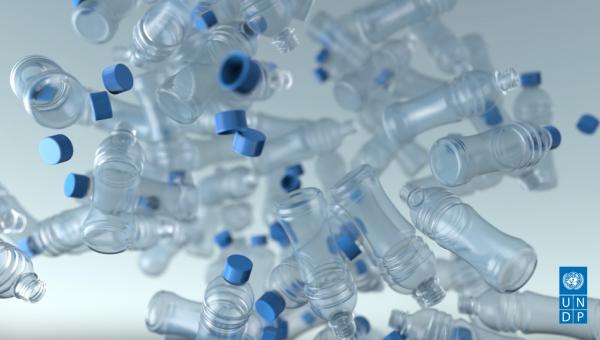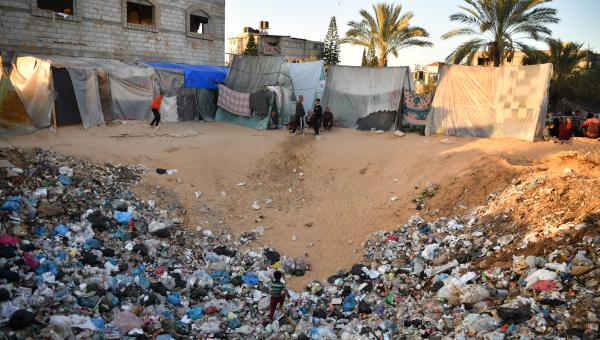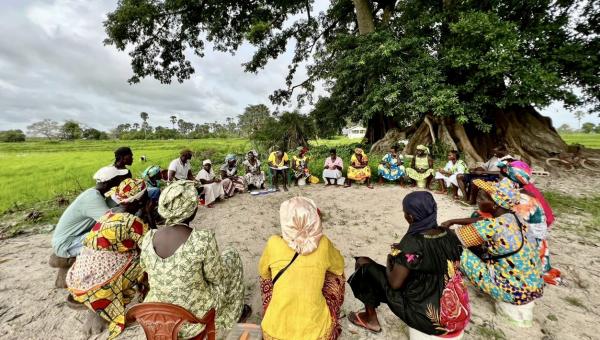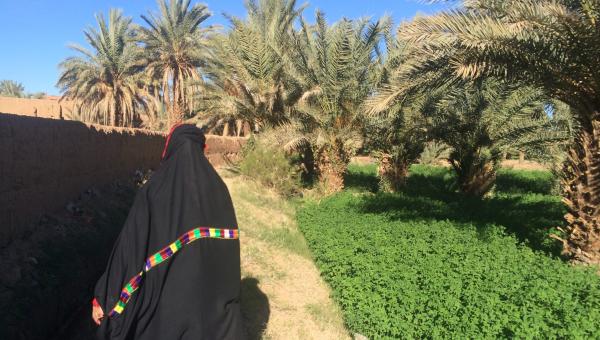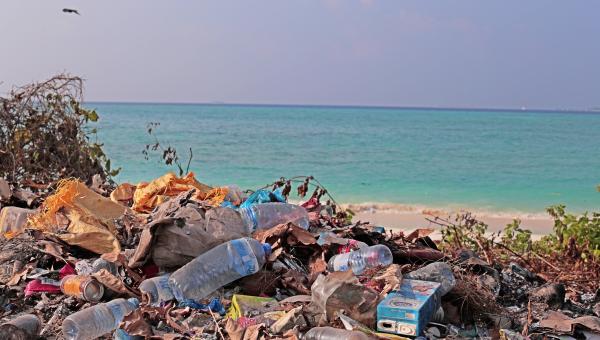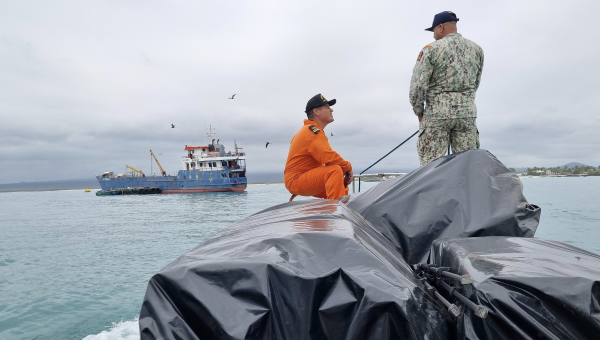Plastics 101
A quick guide to the global plastics negotiations
Our current relationship with plastics is driving nature loss, creating health risks and fuelling the climate crisis. It is time to rethink this relationship and build a system that protects both human health and the planet.
This guide cuts through the complexity of the plastics crisis and the efforts to solve it.
An ambitious global plastics treaty is our best bet to beat plastic pollution. By the end of 2024, UN Member States are expected to complete the negotiation of a global deal to end plastic pollution.
Hailed as the most important multilateral environmental pact since the Paris Agreement on climate change, the decisions made during these negotiations could radically transform the way we produce, consume and dispose of plastics.
As talks on how to realize this goal are under way, we compiled some of the key terms and concepts shaping discussions to help you stay informed and follow the negotiations with ease.
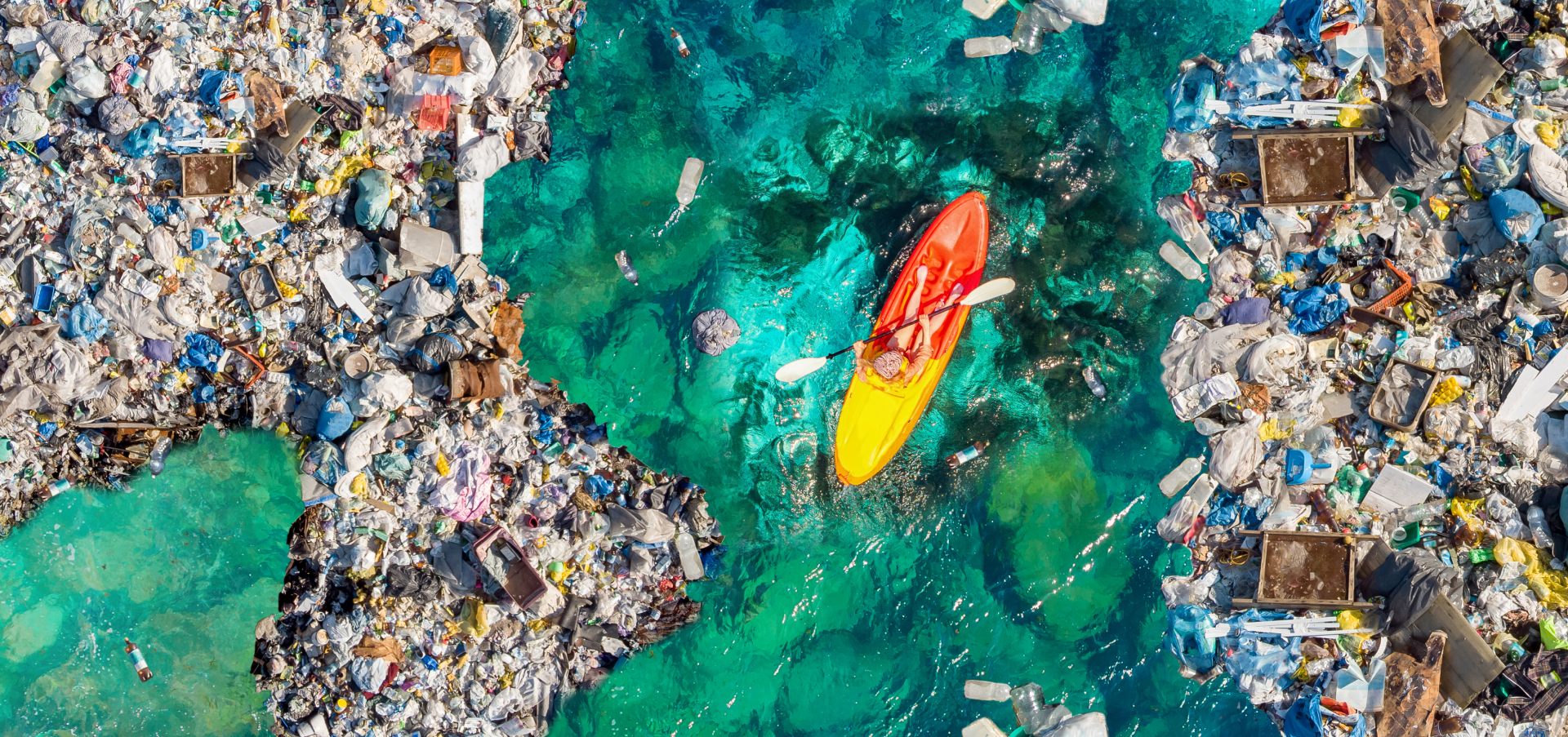
A kayaker navigates though islands of trash. A new international treaty currently under negotiation aims to transform the way we produce, consume and dispose of plastics.
UNEA resolution 5/14
This resolution is frequently mentioned in relation to the negotiations. It refers to the historic decision adopted at the fifth session of the United Nations Environment Assembly (UNEA) in March 2022 to develop an international legally binding instrument on plastic pollution, including in the marine environment.
The resolution titled “End plastic pollution: Towards an international legally binding instrument” specifies for the treaty to address the full lifecycle of plastics and raises the ambition to conclude negotiations by the end of 2024.
Intergovernmental Negotiating Committee (INC)
This is the negotiating body established by the UN Environment Assembly to develop the text of a global agreement on plastic pollution. It is hosted by the United Nations Environment Programme and consists of delegates from Member States. Observers to the INC meetings include inter-governmental organizations, civil society organizations, private sectors and scientific communities.
Negotiators are set to meet five times between 2022 and 2024 to work out the details of the legal instrument. The first session of the INC (INC-1) was held in November 2022 in Punta del Este, Uruguay with more than 2,300 participants from 160 countries and stakeholder groups. The second round of negotiations (INC-2) is taking place in Paris, France from 29 May to 2 June 2023 and is expected to address substantive matters such as potential treaty elements.
Plastic pollution
Although plastic pollution is often framed as a waste management issue, the concept of plastic pollution encompasses all the negative effects and emissions resulting from the production and consumption of plastic materials and products across their entire lifecycle.
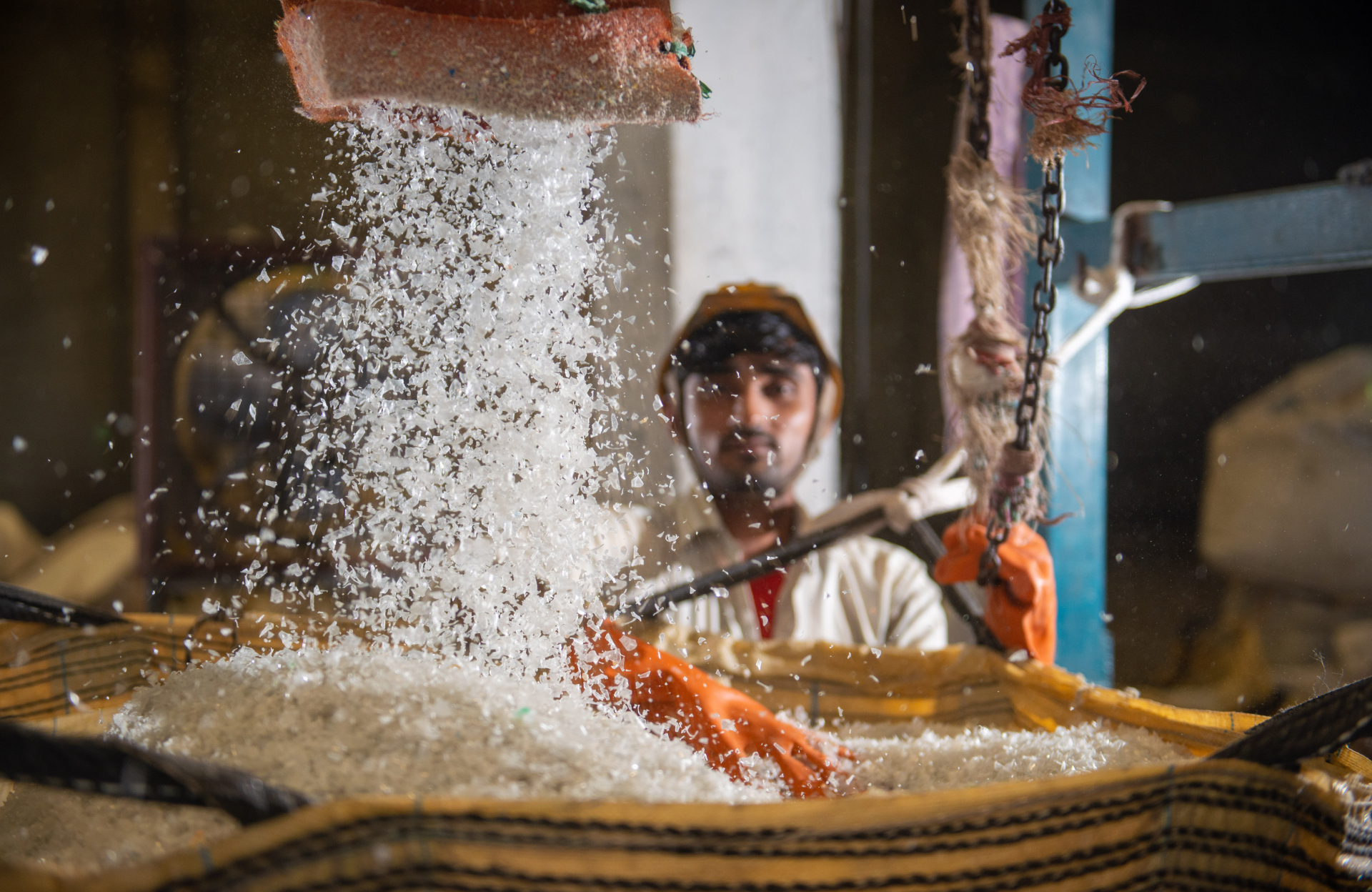
A recycling plant processes plastic waste to be used to make polyester fibre. Only about 9% of plastic waste is recycled; most ends up in landfills or in the environment.
Lifecycle approach
This concept is an integral part of negotiations and is specifically mentioned in UNEA resolution 5/14.
From the extraction and processing of raw materials to design, manufacture, distribution, use, and disposal, plastics impact the health of both people and the planet.
A lifecycle approach helps to identify and consider all potential impacts caused by plastic products, services, and their alternatives (for example, on climate, nature, health, jobs, economy, etc.) in each stage of the value chain.
If we truly want to address the root causes of plastic pollution, we must address all stages of the lifecycle and reduce pollution and waste at each stage.
Upstream, midstream and downstream
This language is often used to refer to the point of the plastics lifecycle an intervention is targeting.
Though not always used consistently, the term “upstream” usually describes activities directed at the stage of raw material extractions (such as oil and gas) and plastic production, “midstream activities” refer to the stage of design, manufacture, packaging, distribution and use, and “downstream activities” focus on the end-of-life management of plastics (segregation, collection, sorting, recycling and disposal).
Chemicals in plastics
Over 13,000 chemicals are associated with plastics. Many of these chemicals are of concern due to their high toxicity which can impact human health and nature. Some of these chemicals can leach from plastics at different stages of the lifecycle and find their way into air, water, and soil.
Women and children are particularly vulnerable to these toxic chemicals and exposures can result in long-lasting health effects.
This is crucial information to consider when pursuing a non-toxic circular economy for plastics. Chemicals in plastics must be addressed to protect human health as well as the environment.
Extended producer responsibility
Extended producer responsibility (EPR) is an environmental policy approach that is frequently discussed in the context of the negotiations.
EPR schemes are a practical implementation of the "polluter pays" principle. This means a producer’s responsibility for a product is extended to the waste stage of that product’s lifecycle.
In practice, this often means industries who place plastics on the market pay a fee that is then used to collect, sort, recycle, or finally dispose of the materials.
Most EPR schemes currently focus on collection and recycling but there is an opportunity to expand the scope to incentivize product recyclability and reusability and disincentivize wasteful linear production and consumption models. You can find more detailed information here.
Virgin plastics versus recycled plastics
The term “virgin plastics” refers to plastics that have been newly manufactured from petrochemical feedstock, such as gas or oil, which has never been used before.
“Recycled plastics” on the other hand are plastic polymers that were manufactured from post-consumer plastic scrap or waste, for example, through melting plastic waste into new flakes or pellets that are then reprocessed into new plastic products.
These keywords often pop up in discussions around virgin plastics being overabundant and inexpensive, thereby undermining markets for recycled materials and investments in collection and recycling infrastructure.
Legacy plastics
This term refers to plastics that cannot be reused or recycled, including plastics that are already in the environment as existing pollution.
Many countries, including those particularly affected by coastal and marine plastic pollution, are advocating for legacy plastics and their negative impact to be considered in a legally binding instrument to end plastic pollution.
Single-use plastics
Single-use plastics (SUP) have been in the public spotlight for years. SUP is an umbrella term for plastic items intended to be used only once before they are thrown away or recycled. This includes items like grocery bags, food packaging, bottles, straws, etc.
It is estimated that the world generated 139 million metric tonnes of single-use plastic waste in 2021. That is equivalent to more than 13,700 Eiffel Towers.
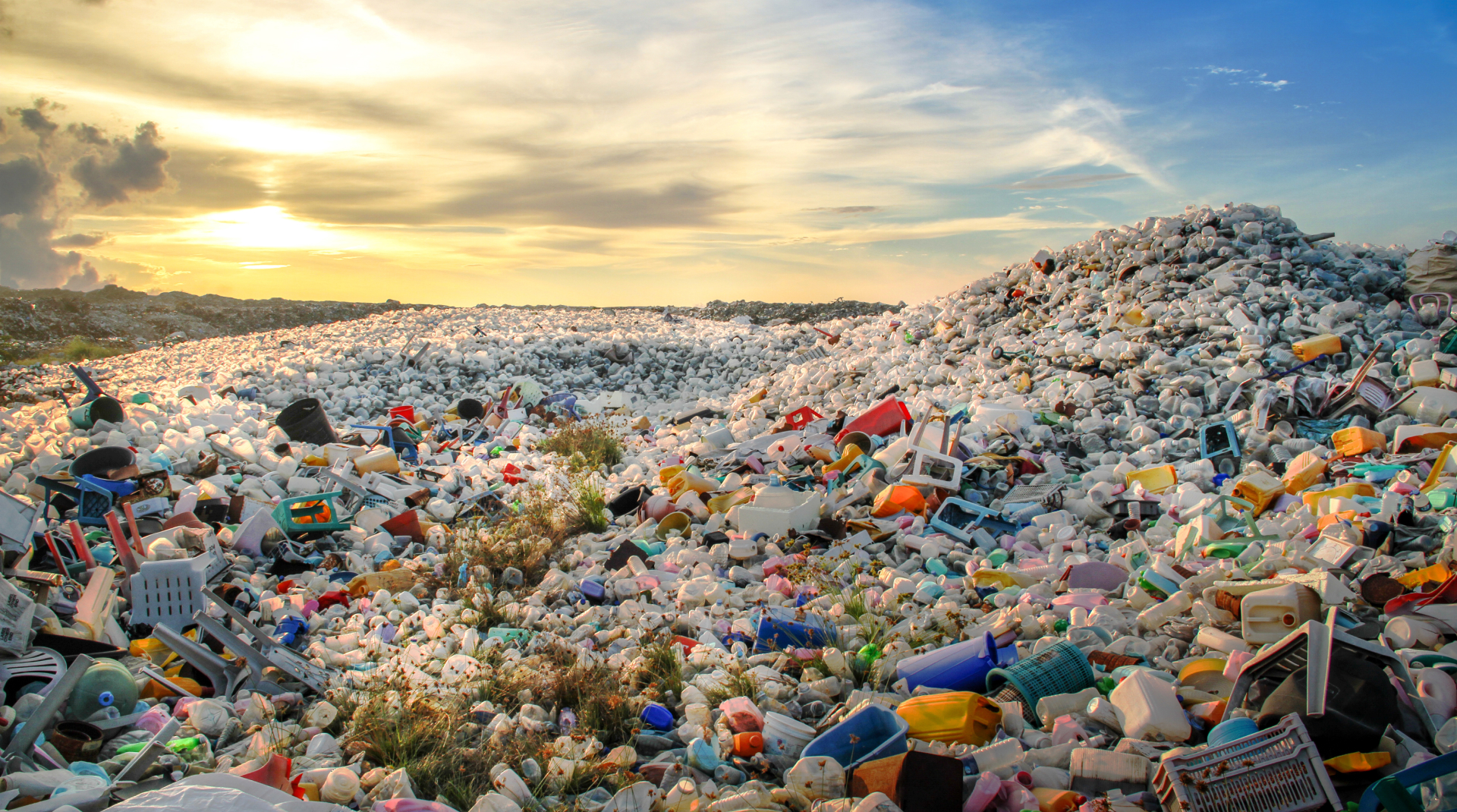
Discarded plastic products are piled high at the Thilafushi landfill island in the Maldives. Once hailed as a miracle of convenience, our relationship with plastics is now driving nature loss, creating health risks and fuelling the climate crisis.

 Locations
Locations